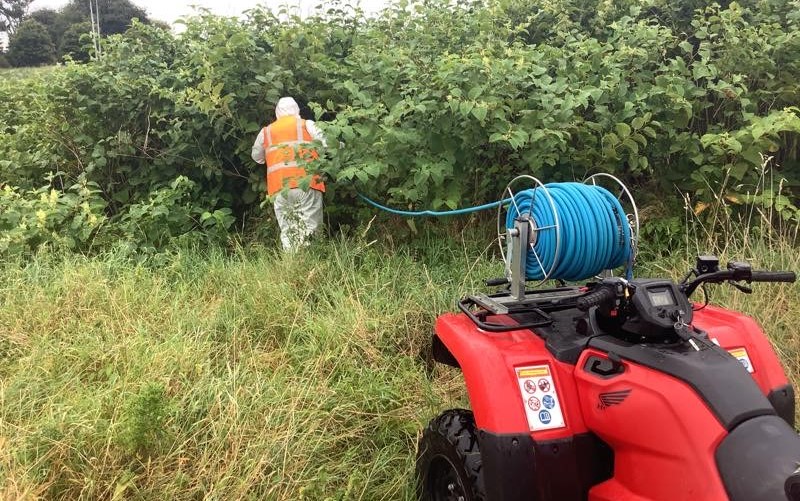Chemical Control
Chemical control of invasive plant species is widely used.

About Chemical Control
Chemical control of invasive plant species is widely used. We offer extensive herbicidal treatments, ranging from stem injection, foliar application and wiping application.
Chemical control of invasive plant species is a low risk, cost effective solution if time allows for it. Many invasive plant species will require multiple seasons of treatment to be effectively treated. We offer extensive herbicidal treatments, ranging from stem injection, foliar application and wiping application. There are a number of contributing factors that determine the application method, ranging from species type to site factors.
Chemical control can be undertaken using a number of different techniques;
- Foliar Spray Application
- Leaf Wiping Application
- Stem and Rhizome Injection
- Direct Stump Treatment
Benefits of chemical control:
- Can be the most cost-effective solution.
- Treatment can be carried out in situ without risk of spreading plant further through transportation of materials.
- Cheaper than mechanical control.
Disadvantages of chemical control:
- Can require the site to remain undisturbed and monitored for several seasons to fully eradicate the plant.
- Restricted use (near waterways, SACs SPAs etc)
Manual Control
Not all invasive species require chemical control but need a more hands on approach. Himalayan balsam is one such invasive species. A proven method of control for Himalayan balsam is through hand-pulling, cutting and strimming. The plants can be pulled up by the root and plants disposed of accordingly. This cutting or pulling should be carried out prior to seed heads becoming viable in approx June. Large infestations can be cut at the ground level below the lowest node to stop regeneration. This should be carried out yearly until there is no regrowth or the seedbank has been exhausted.
Species such as Giant Rhubarb and Giant Hogweed also benefit from manual control in the form of “dead heading”. The removal of seed heads helps to stop the spread of such species by exhausting the seed bank present in the surrounding soils over a number of years.
Foliar Application
Foliar spray is the most common technique used to treat invasive species. It is used for treating large infestations.
Foliar application can be carried out through a number of different mechanical means, e.g., by knapsack, quad-bike sprayer etc.
For larger scale infestations and for works on the public road network, JKI Ltd operate several specially adapted treatment vehicles.

Leaf Wiping Application
Leaf or weed wiping has significant advantages over foliar spraying or spot spraying when treating sensitive areas. The rope or sponge contains concentrated herbicide that can be applied to the targeted plant.
With no off spray, wildlife habitats and species rich protected areas are less affected and it makes weed control healthier for you too.
The downside is this method of control is far more labour intensive, and may not be suitable for large infestations. Larger weed wipers can be towed behind a quadbike, taking advantage of different heights of plants to apply the herbicide to the target species.

Stem and Rhizome Injection
Stem injection works by injecting a calibrated dose of herbicide directly into each cane of the weed, The herbicide is quickly absorbed by the plant and is translocated through the roots, giving effective control of notoriously difficult weeds. The most effective time to apply herbicides to woody plants is in autumn. At this time, before plant wintering, the remaining nutrients in the plant are drawn back down into the rhizome, thus making it a particularly good stage for it to draw the herbicide into the root also.

Direct Stump Treatment
Direct stump or stem treatment is usually used for woody plants and shrubs such as Buddleia, Cherry Laurel and Rhododendron.
Direct stump / stem treatment works by cutting the plant to the stump and painting on herbicide with a hand dispenser.
Variations of the direct stump / stem treatment can be carried out depending on the plant. The plant can also be drilled, and the notches filled with herbicide.

